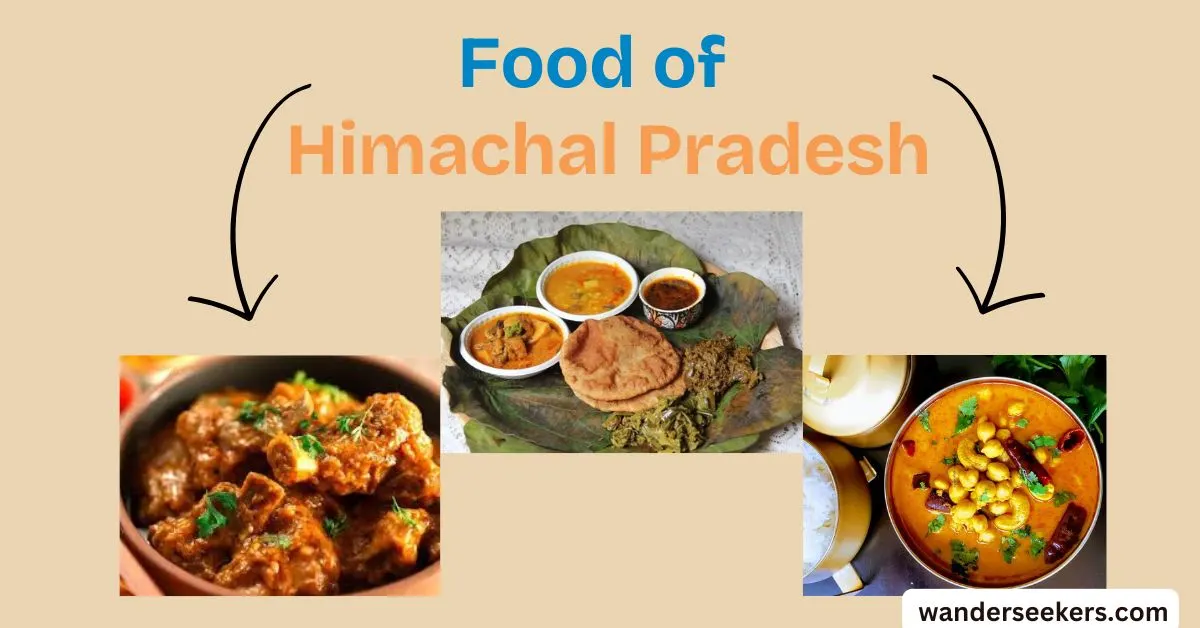Himachal Pradesh offers a delightful variety of traditional dishes that reflect its rich culture and mountainous terrain. Madra, a chickpea-based dish cooked with yogurt and spices, is a staple in Chamba and Kangra. Dhaam, a festive meal, includes rice, lentils, rajma, curd, and boor ki kadi, often served with jaggery. Tudkiya Bhath is a unique pulao infused with lentils, potatoes, and aromatic spices. Bhey, made from lotus stems, is a flavorful dish enjoyed across the state. Chha Gosht, a spicy lamb curry, is popular in Chamba. Siddu, a steamed wheat bun stuffed with poppy seeds or walnuts, is a winter favorite. Babru, a deep-fried flatbread stuffed with black gram, is a delicious snack. Kullu Trout Fish, cooked with minimal spices, is a must-try for seafood lovers. Aktori, a buckwheat pancake, is a festive delicacy, while Mittha, a sweet rice dish with dry fruits, completes a Himachali meal. Each dish showcases the unique flavors of the region, making Himachal Pradesh a paradise for food lovers.
Table of Contents
1. Siddu
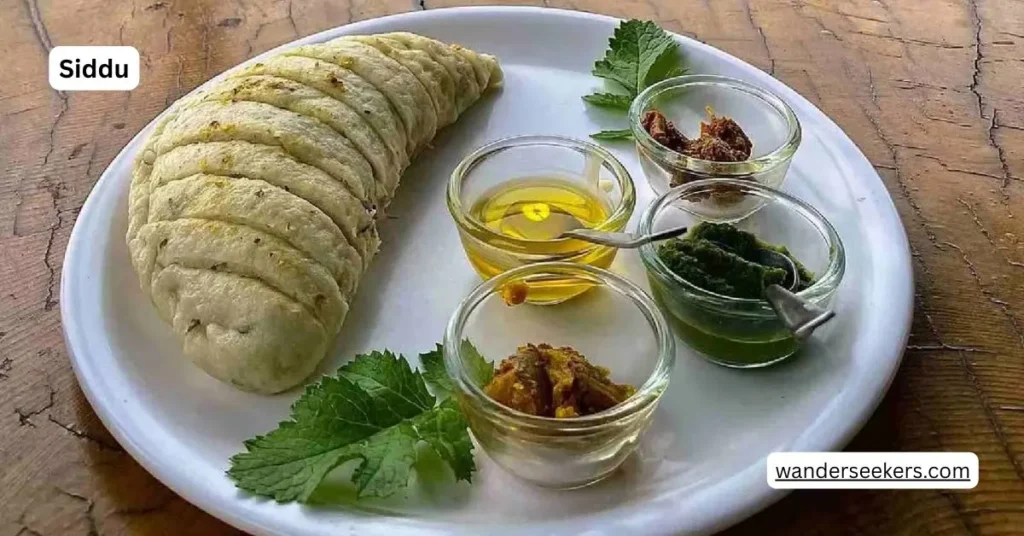
Siddu is a traditional steamed bread from Himachal Pradesh, particularly popular in Kullu, Manali, Mandi, Rohru, and Shimla. Made from wheat flour, yeast, and a variety of fillings like walnuts, sesame seeds, or lentils, Siddu is a winter delicacy that provides warmth and energy. The dough is fermented for several hours, giving it a slightly tangy flavor. It is then stuffed with a savory or sweet filling, shaped into half-moon forms, and steamed until soft and fluffy. Traditionally, Siddu is served with desi ghee (clarified butter), enhancing its rich taste, but it can also be enjoyed with mint chutney, milk, or tea. This dish is deeply rooted in Himachali cuisine, often prepared during festivals and family gatherings. Its unique texture and nutritional value make it a beloved comfort food in the region.
2. Madra
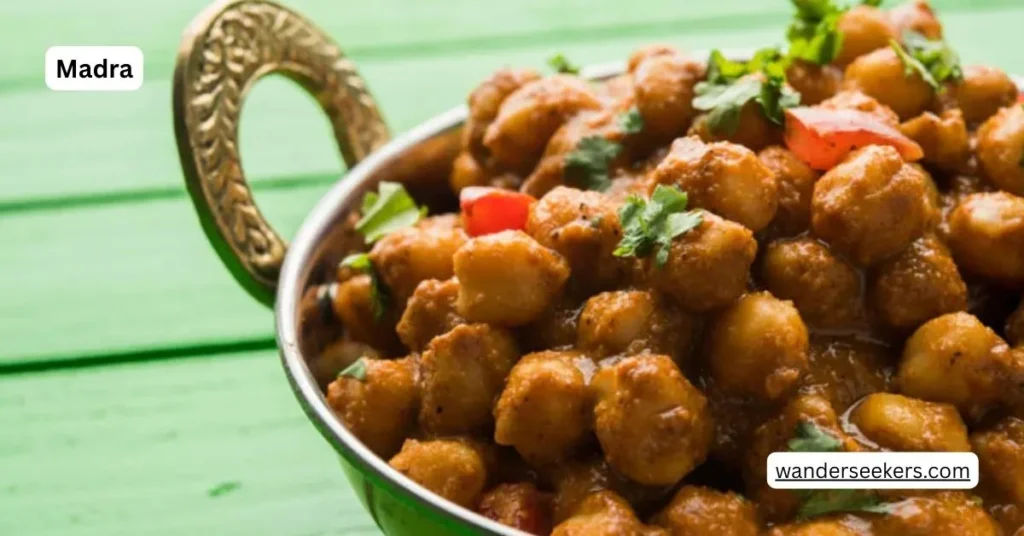
Madra is a traditional dish from Himachal Pradesh, deeply rooted in the region’s Dham cuisine. It is a curd-based curry made with chickpeas (chana) or kidney beans (rajma), slow-cooked with aromatic spices like cloves, cinnamon, cardamom, cumin, and turmeric. The dish is rich, creamy, and mildly tangy due to the use of yogurt, which enhances its flavor. Madra is an essential part of Himachali feasts, especially during weddings and festivals. Different regions of Himachal have their variations, such as Rajma Madra from Chamba and Sepu Badi Madra from Mandi. Traditionally, it is cooked in desi ghee, giving it a distinct taste and richness. Served with steamed rice, Madra is a comforting and flavorful dish that reflects the culinary heritage of Himachal Pradesh. Its slow-cooked preparation ensures that the spices infuse deeply, making it a delightful experience for food lovers.
3. Dhaam
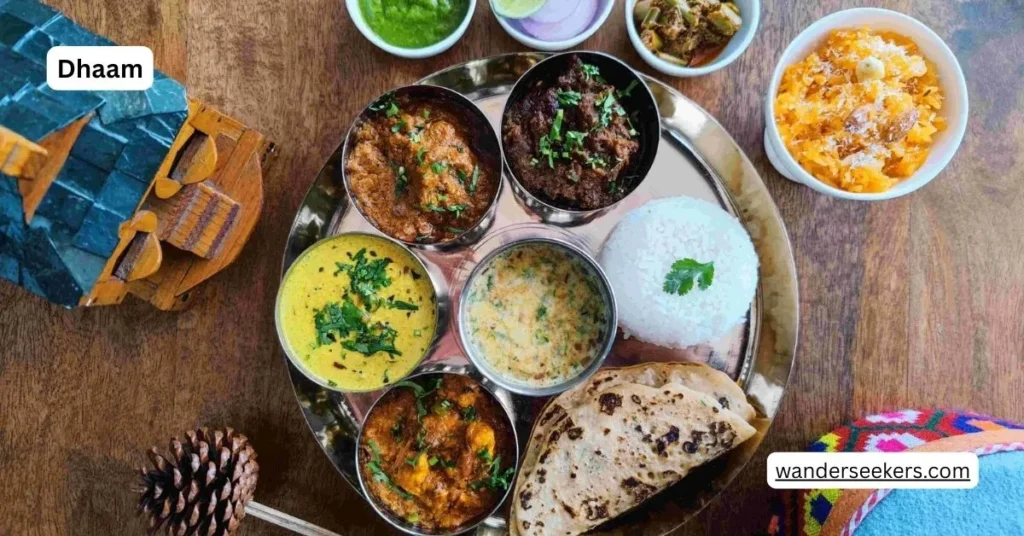
Dhaam is a traditional feast from Himachal Pradesh, served during weddings, festivals, and religious ceremonies. It is a pure vegetarian meal, prepared by botis—hereditary Brahmin chefs—using age-old recipes and cooked in brass utensils for enhanced flavor. The meal is served on banana leaves or petals, and people sit on the ground to enjoy it, making it a communal experience. A typical Dhaam includes Madra (a yogurt-based chickpea dish), Chana Dal, Sepu Vadi (lentil dumplings in spinach gravy), Kadhi, Boondi Raita, and Meethe Chawal (sweet rice flavored with saffron and dry fruits). Originating in the Chamba Valley, Dhaam reflects the rich culinary heritage of Himachal Pradesh. The balance of sweet, sour, and savory flavors makes it a unique and cherished tradition.
4. Tudkiya Bhath
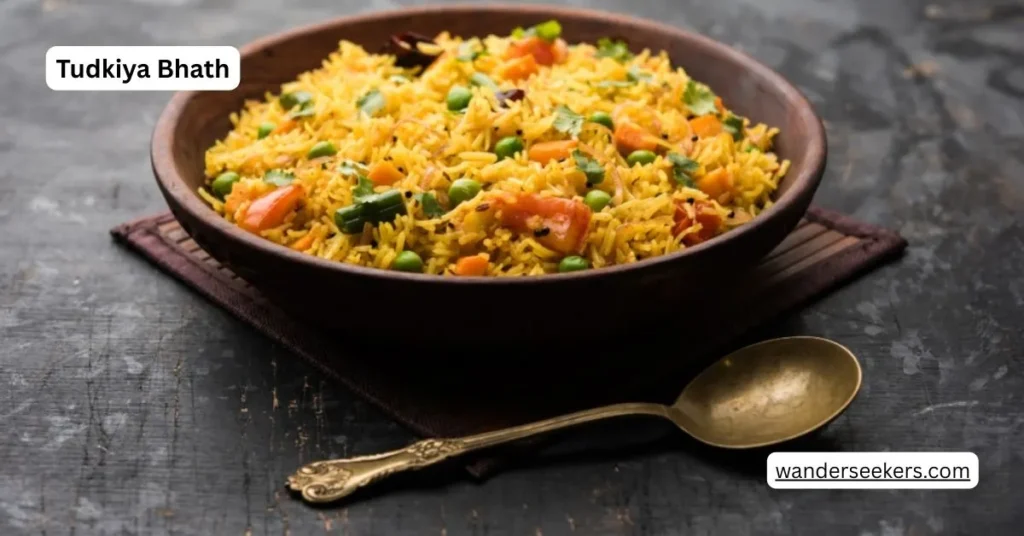
Tudkiya Bhath is a traditional Pahari rice dish from Himachal Pradesh, known for its rich flavors and aromatic spices. Unlike regular pulao, Tudkiya Bhath is slow-cooked with masoor dal (red lentils), yogurt, and a blend of spices like cinnamon, bay leaf, star anise, mace, and dad phool (stone flower), giving it a distinct taste. The preparation involves marinating potatoes in a spice paste made from onions, tomatoes, ginger, garlic, poppy seeds, and green chilies, which are then cooked with soaked rice and lentils. Traditionally, it is served with mashed dal (Kangra Teliya Mah) and a squeeze of lime, making it a comforting and wholesome meal. Tudkiya Bhath reflects the culinary heritage of Himachal Pradesh, offering a unique blend of earthy flavors and nutritional richness. Would you like a detailed recipe or variations of this dish?
5. Bhey
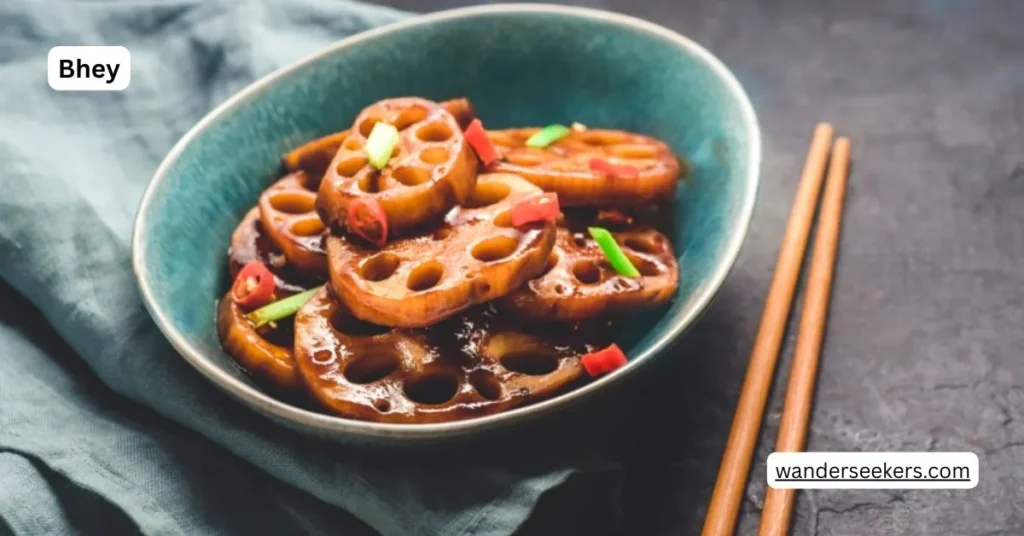
Bhey is a traditional dish from Himachal Pradesh, made from lotus stem and infused with rich spices. This unique delicacy is known for its crunchy texture and flavorful taste, making it a favorite among locals. The preparation involves slicing the lotus stem into thin pieces and cooking it with onions, garlic, ginger, and a blend of spices like turmeric, coriander, and red chili powder. The dish is slow-cooked to absorb the flavors, resulting in a delicious and aromatic meal. Bhey is often enjoyed with roti or rice, and its earthy taste pairs well with traditional Himachali cuisine. It is not only tasty but also nutritious, as lotus stem is rich in fiber, vitamins, and minerals. With its distinct texture and bold flavors, Bhey showcases the culinary diversity of Himachal Pradesh. Would you like a detailed recipe or variations of this dish?
6. Chha Gosht
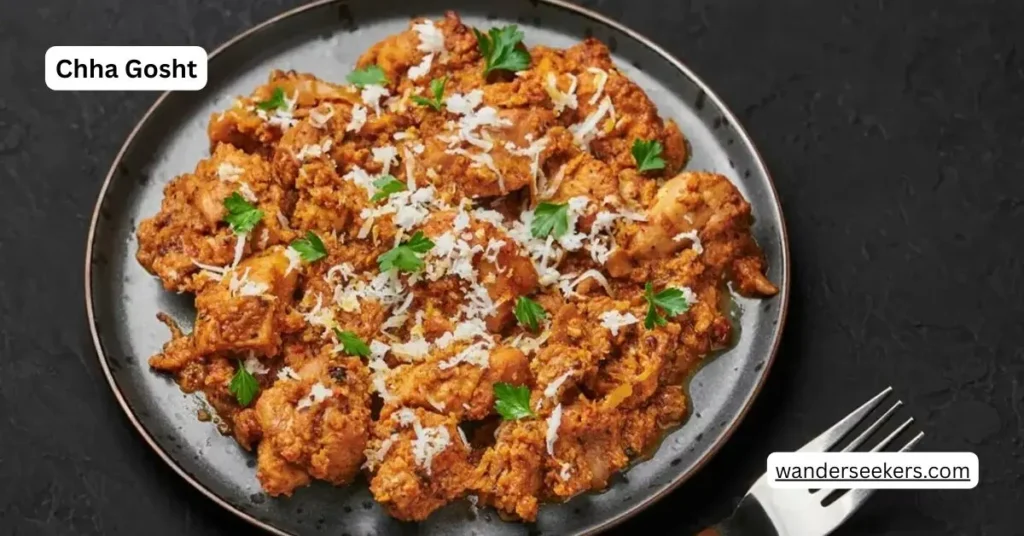
Chha Gosht is a traditional Himachali mutton curry, known for its rich flavors and aromatic spices. This dish is prepared by marinating mutton in yogurt, gram flour, and a blend of spices like cloves, cinnamon, bay leaves, and cardamom. The marinated meat is then slow-cooked in mustard oil with onions, ginger, garlic, and green chilies, allowing the flavors to infuse deeply. The dish has a royal appeal, often served at special occasions and family gatherings in Himachal Pradesh. The slow-cooking process ensures the meat remains tender while absorbing the tangy and mildly spicy flavors of the gravy3. Traditionally, Chha Gosht is enjoyed with steamed rice or naan, making it a hearty and satisfying meal. With its bold flavors and rich texture, Chha Gosht is a must-try for lovers of authentic Himachali cuisine. Would you like a detailed recipe or variations of this dish?
7. Babru
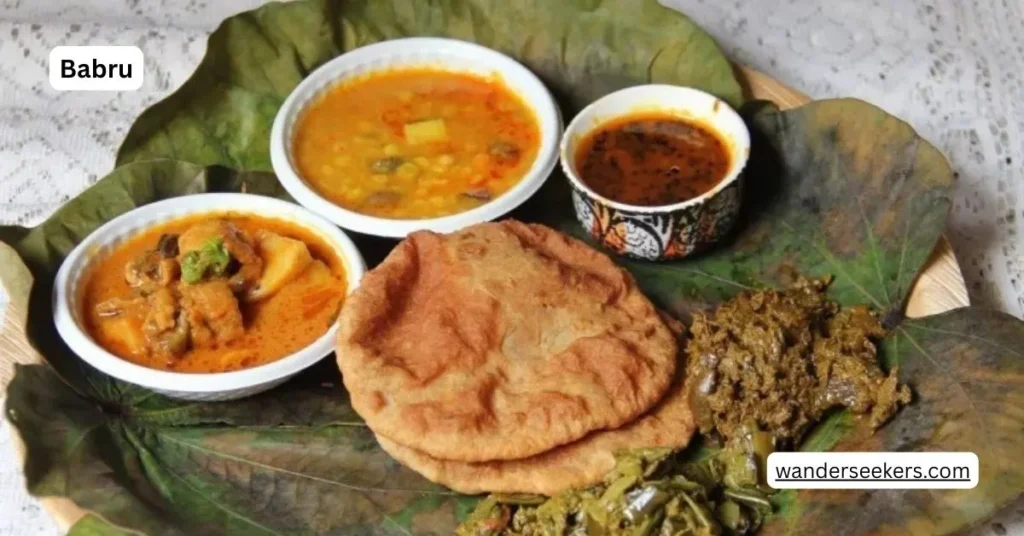
Babru is a traditional stuffed bread from Himachal Pradesh, often compared to kachoris or puris due to its crispy texture and deep-fried preparation. Made from whole wheat flour, Babru is filled with a flavorful stuffing of black gram (urad dal), which is soaked overnight, ground into a coarse paste, and seasoned with spices. The dough is rolled out, stuffed with the lentil mixture, and then deep-fried until golden brown. Babru is typically enjoyed as a breakfast dish, served with Chana Madra or Boondi Raita, making it a hearty and delicious meal. This dish reflects the culinary heritage of Himachal Pradesh, offering a unique twist on traditional Indian breads. Its rich flavors and crispy texture make it a favorite among locals and visitors alike.
8. Kullu Trout Fish
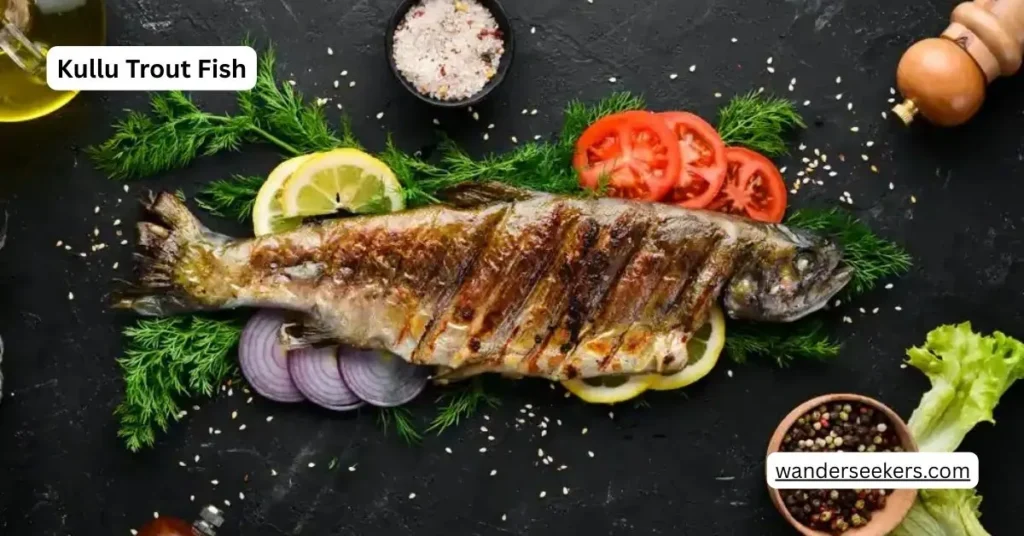
Kullu Trout Fish is a celebrated dish from Himachal Pradesh, known for its simple yet flavorful preparation. This brown trout variety, introduced during British rule, thrives in the cold waters of the Beas River, making it a regional favorite. The dish is prepared with minimal spices to retain the natural taste of the fish. The trout is marinated with coriander seeds, dill leaves, mustard oil, lemon juice, and chili flakes, then lightly fried until golden brown. It is traditionally served with steamed rice, enhancing its delicate flavors. Trout farming has flourished in Himachal Pradesh, with government initiatives promoting sustainable aquaculture. The fish is prized for its high protein content, Omega-3 fatty acids, and low sodium levels, making it a nutritious choice. With its fresh taste and rich history, Kullu Trout Fish remains a must-try delicacy for seafood lovers. Would you like a detailed recipe or more insights into its origins?
9. Tibetan Thukpa
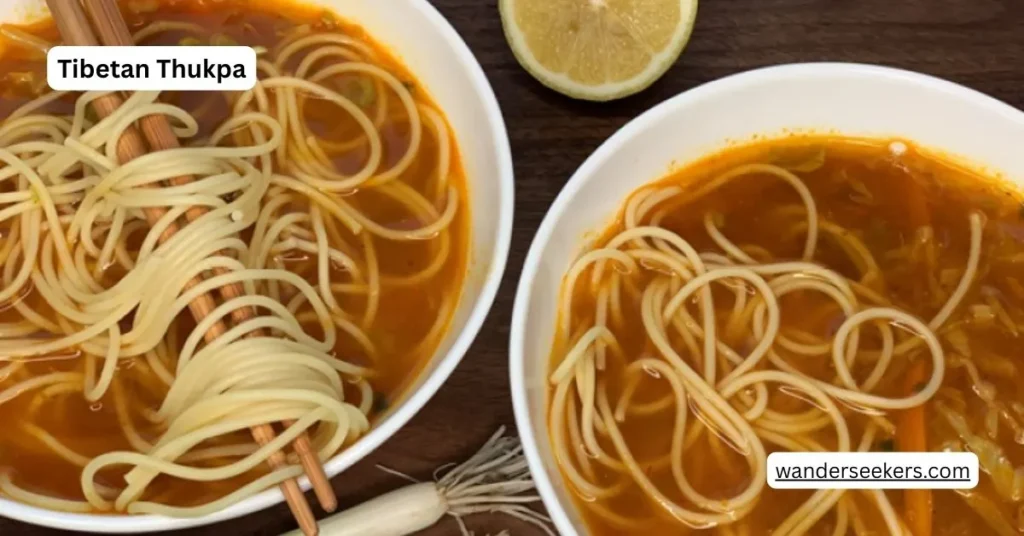
Thukpa is a traditional Tibetan noodle soup, cherished for its warmth and rich flavors. Originating from Amdo, Tibet, it has become a staple in Nepal, Bhutan, and Ladakh, adapting to local tastes. This hearty dish consists of hand-pulled or chopped noodles, simmered in a flavorful broth made with vegetables, meat, or lentils. The soup is seasoned with garlic, ginger, cumin, and coriander, creating a comforting and aromatic meal. Variations include Thenthuk (hand-pulled noodles) and Gyathuk (Chinese-style noodles). Thukpa is especially popular in cold regions, providing nourishment and warmth. The Nepalese version tends to be spicier, while the Bhutanese variety has a mild sweetness. Traditionally, it is garnished with spring onions, coriander, and lime, enhancing its fresh taste. With its cultural significance and wholesome flavors, Thukpa remains a beloved dish across the Himalayas. Would you like a recipe or details on its regional variations?
10. Mittha
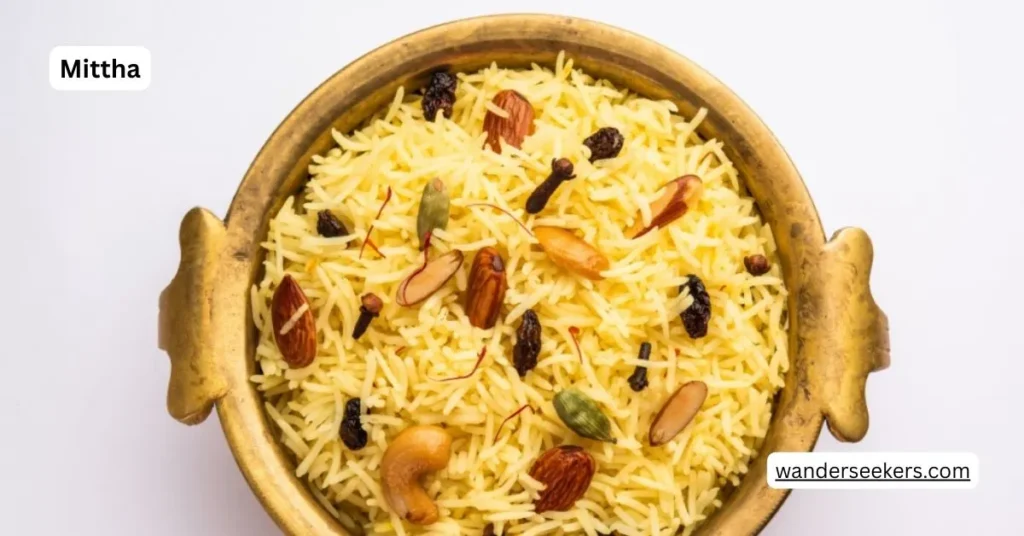
Mittha is a traditional sweet dish from Himachal Pradesh, often prepared during festivals, weddings, and celebrations. This delightful dessert consists of sweetened rice, flavored with saffron, cardamom, and dry fruits like raisins, cashews, and almonds. The preparation begins with cooking rice until fluffy, then layering it with sugar, saffron milk, and roasted dry fruits. The dish is slow-cooked to allow the flavors to blend, resulting in a rich and aromatic treat. Some variations use jaggery instead of sugar, adding a deeper sweetness. Mittha is an integral part of Himachali cuisine, symbolizing warmth and hospitality. It is often served at Dham feasts, where traditional dishes are enjoyed in a communal setting. With its simple yet luxurious flavors, Mittha remains a beloved dessert across the region. Would you like a detailed recipe or insights into its cultural significance? You can also check out this source for more details!
